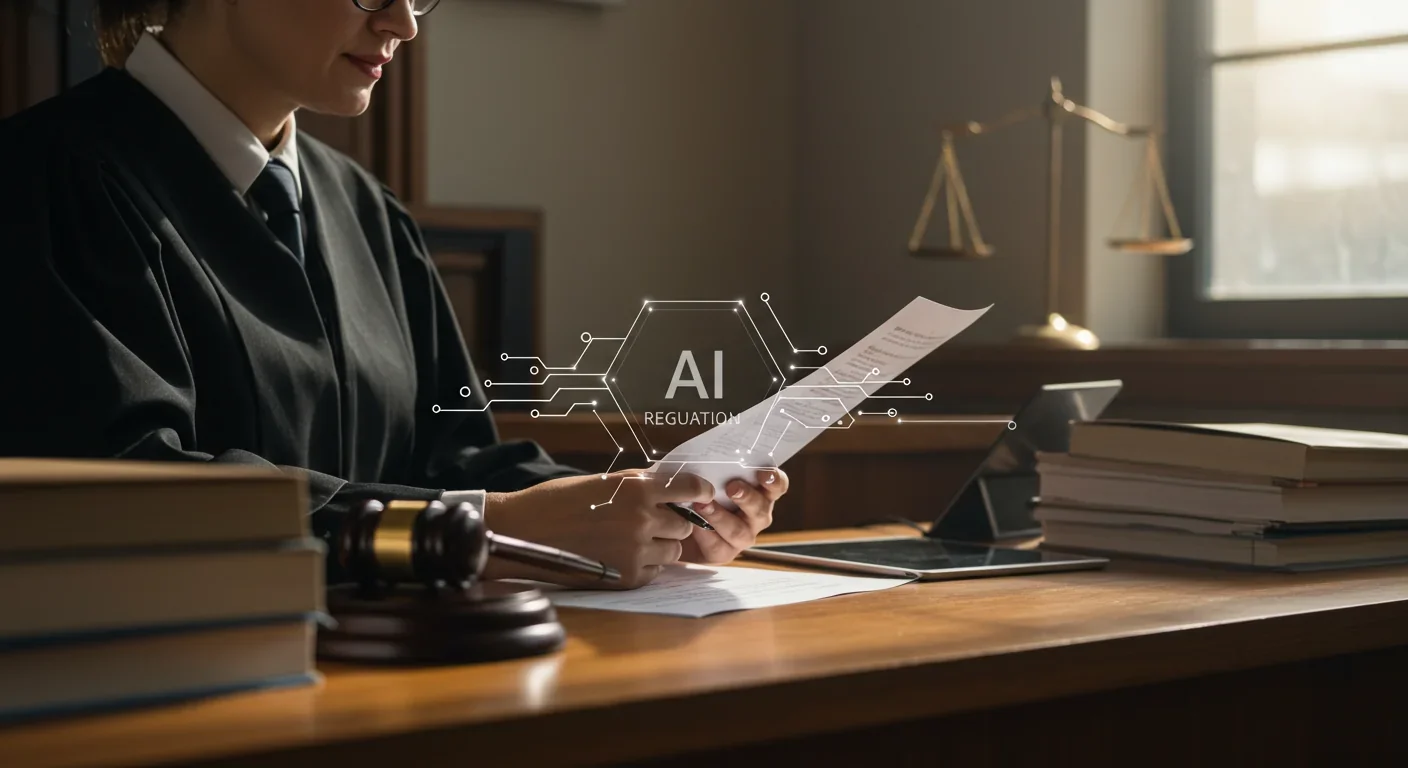Zero-Trust Security Revolution: Verify Everything Always

TL;DR: AI bias auditing has evolved from academic research to legal requirement, with tools like IBM's AI Fairness 360 and Microsoft's Fairlearn now enabling organizations to quantify discrimination across hiring, lending, and healthcare systems before deployment.

By 2030, algorithms will decide who gets a job interview, a loan, bail, or healthcare treatment for billions of people worldwide. Right now, most of these systems are making decisions in a black box, and researchers are uncovering systematic discrimination baked into the code. The good news? We're getting much better at catching bias before it causes harm.
The quiet revolution happening in AI fairness isn't about slowing down technological progress. It's about making sure the systems we trust with life-changing decisions actually work for everyone.
What started as academic research has become standard practice at major tech companies and a legal requirement in several jurisdictions. New York City's Local Law 144 now mandates bias audits for any automated employment decision tool. The EU AI Act classifies AI systems used in hiring, credit scoring, law enforcement, and essential services as high-risk, requiring rigorous fairness testing before deployment.
The shift happened because consequences became impossible to ignore. When researchers discovered that facial recognition systems had error rates up to 34% higher for darker-skinned faces, or that healthcare algorithms systematically underestimated the needs of Black patients, the tech industry faced a reckoning.
Today's bias detection tools can quantify discrimination with precision. They measure whether an AI system treats different demographic groups fairly across multiple dimensions, from hiring rates to loan approvals to diagnostic accuracy. The toolkit has evolved from theoretical frameworks to production-ready software.
The problem of bias in automated decision-making isn't new. It's as old as actuarial tables and credit scoring. What changed is scale and opacity.
In the 1970s, when banks used simple formulas to decide who qualified for a mortgage, discriminatory outcomes were often visible in the criteria themselves. Zip code-based redlining was explicit and therefore challengeable. But modern machine learning models operate differently. They discover patterns in historical data that humans never explicitly programmed. Sometimes those patterns encode decades of human prejudice.
The 2016 ProPublica investigation of COMPAS, an algorithm used to predict recidivism in criminal justice, showed how AI could perpetuate racial disparities even when race wasn't a direct input. The system flagged Black defendants as high-risk at twice the rate of white defendants, while white defendants were more likely to be mislabeled as low-risk.
Similar patterns emerged in hiring algorithms that learned to favor male candidates because historical hires skewed male, in lending algorithms that charged women higher interest rates, and in healthcare systems that allocated fewer resources to minority patients. The wake-up call prompted researchers to develop rigorous mathematical definitions of fairness and build tools to measure them.
Algorithmic bias creeps in at multiple stages of the AI development lifecycle, often in ways that aren't obvious until you specifically look for them.
Historical bias comes from training data that reflects past discrimination. If you train a hiring algorithm on 20 years of successful employees at a company that historically discriminated against women, the algorithm learns that pattern as success, not bias.
Representation bias occurs when training data doesn't include enough examples from certain groups. Early facial recognition systems worked poorly on darker skin tones because the datasets used to train them were overwhelmingly white faces.

Measurement bias happens when the features you measure or the labels you assign systematically disadvantage certain groups. Using arrest records as a proxy for criminal behavior introduces bias because policing itself is biased toward certain communities.
Aggregation bias emerges when a single model serves diverse populations with different needs. A diabetes risk model that performs well on average might fail for specific ethnic groups with different disease progression patterns.
The challenge is that well-intentioned data scientists can introduce bias at any of these stages without realizing it. The solution isn't just better intentions. It's systematic auditing.
Modern bias detection relies on quantitative fairness metrics that measure whether an AI system treats groups equitably. Different contexts require different definitions of fair.
Demographic parity asks whether different groups receive positive outcomes at similar rates. If an algorithm approves 70% of loan applications from white applicants but only 45% from Black applicants, it fails demographic parity. This metric works well when the goal is equal opportunity.
Equalized odds goes deeper, examining whether the model's error rates are similar across groups. It checks both false positive rates and false negative rates. In criminal justice, this means the algorithm shouldn't incorrectly flag low-risk white defendants as dangerous more often than low-risk Black defendants.
Calibration asks whether a prediction means the same thing across groups. If the algorithm says someone has a 60% chance of defaulting on a loan, about 60% of people who receive that score should actually default, regardless of their demographic group.
No single metric captures every dimension of fairness, and sometimes metrics conflict with each other. It's mathematically impossible to satisfy all fairness definitions simultaneously in many real-world scenarios. That's why auditing requires human judgment about which fairness criteria matter most for each specific use case.
Several open-source frameworks have become standard tools for bias auditing, each with distinct strengths.
IBM's AI Fairness 360 offers the most comprehensive toolkit, with over 70 fairness metrics and 10 bias mitigation algorithms. It works across the full AI lifecycle, from examining datasets for bias to testing trained models to applying corrections.
Microsoft's Fairlearn focuses specifically on Python scikit-learn workflows, making it easy to add fairness constraints during model training. It can enforce demographic parity or equalized odds as optimization objectives, forcing the algorithm to find solutions that balance accuracy and fairness.
Google's What-If Tool provides visual interfaces for probing model behavior without writing code. You can adjust individual features and see how predictions change, test counterfactual scenarios, and explore whether the model treats similar individuals consistently.
These tools don't automatically make your AI system fair. They make the discrimination measurable and visible, so teams can make informed decisions about acceptable tradeoffs.

The NYC Local Law 144 requirement created a natural experiment in mandatory bias auditing. Companies using automated hiring tools must now conduct annual audits and publish results publicly.
Early audit reports revealed systematic patterns. Many resume screening algorithms showed disparities in selection rates across race and gender, with gaps ranging from 5% to over 20%. Some companies discovered their AI was screening out qualified candidates from underrepresented groups at significantly higher rates than humans would.
In healthcare, researchers auditing an algorithm used to identify patients needing high-risk care management found it systematically underestimated Black patients' needs. The algorithm used healthcare spending as a proxy for health needs, but Black patients on average had less spent on their care due to unequal access, not lesser needs. The audit led to a redesigned algorithm.
Financial institutions auditing lending algorithms have discovered disparate impact in interest rate assignments and credit limit decisions. Some found that the bias came not from the AI model itself but from biased data fed into it, like using zip codes that correlate with race.
Organizations serious about AI fairness need systematic processes, not one-time checks.
Define fairness for your context. A hiring algorithm and a medical diagnosis system require different fairness criteria. Involve ethicists, domain experts, affected communities, and legal counsel in defining what fair outcomes look like.
Establish baseline measurements. Before deploying AI, measure outcomes under current decision-making processes. You need to know whether the algorithm improves, maintains, or worsens existing disparities.
Integrate auditing into development workflows. Fairness testing should happen at every stage: dataset analysis before training, model evaluation during development, ongoing monitoring in production. Treat bias testing like security testing.
Create feedback loops. Deploy monitoring systems that track fairness metrics in production and alert teams when disparities emerge. Real-world data drift can introduce bias over time even in systems that passed initial audits.
Prepare for tradeoffs. Perfect fairness across all metrics while maintaining accuracy is usually impossible. Teams need governance processes for making defensible decisions about which fairness constraints take priority.
Build diverse teams. Homogeneous teams have blind spots. People who haven't experienced discrimination often don't anticipate how systems might harm marginalized groups.
The regulatory environment around algorithmic bias is evolving rapidly, creating both compliance requirements and legal liability.
The EU AI Act took effect in 2024, establishing the world's most comprehensive framework for AI regulation. High-risk systems must undergo conformity assessments before deployment, maintain detailed documentation, and implement ongoing monitoring. Violations carry fines up to 6% of global revenue.
In the United States, regulation is more fragmented but growing. NYC Local Law 144 set a precedent now being considered in other jurisdictions. The White House Blueprint for an AI Bill of Rights establishes principles including protection from algorithmic discrimination.
Existing anti-discrimination laws apply to AI systems. The Equal Employment Opportunity Commission can investigate hiring algorithms under Title VII. The Fair Housing Act applies to AI in lending and real estate.
Forward-thinking companies are treating bias audits as risk management, not just compliance. The reputational damage from a discrimination scandal, the cost of litigation, and the market advantage of trustworthy AI all justify investment in systematic fairness testing.
Europe leads in comprehensive regulation, treating algorithmic fairness as a fundamental rights issue. The EU AI Act embeds fairness requirements into a broader framework addressing safety, transparency, and accountability.
The United States takes a more sector-specific approach, with different agencies regulating AI in employment, housing, credit, and healthcare under existing civil rights frameworks. This creates innovation space but also confusion about requirements.
China's approach emphasizes algorithmic accountability to government authorities rather than transparency to users. Regulations focus on content moderation, recommendation systems, and preventing discrimination in areas aligned with state priorities.
Countries like Canada and Australia are developing governance frameworks that balance innovation incentives with fairness requirements. Singapore has published an AI governance framework emphasizing risk-based regulation backed by government oversight.
The global divergence creates challenges for companies deploying AI internationally. A system that meets fairness requirements in one jurisdiction might fail in another, not just legally but ethically.
As bias auditing becomes standard practice, the skills required to build and evaluate AI systems are changing.
For data scientists and ML engineers: Understanding fairness metrics and bias mitigation techniques is becoming as fundamental as knowing how to optimize accuracy. The job now includes ethical reasoning about fairness-accuracy tradeoffs.
For product managers: You need frameworks for deciding which fairness metrics matter for your use case, processes for involving affected communities in those decisions, and strategies for managing inevitable tradeoffs.
For executives and policymakers: Literacy in algorithmic fairness moves from nice-to-have to mandatory. You're accountable for systematic discrimination in your AI systems whether you understand the technical details or not.
For everyone: As AI systems make more decisions affecting our lives, understanding what bias audits can and can't detect becomes civic literacy. Meaningful public participation in AI governance requires basic understanding of how discrimination happens in algorithmic systems.
The organizations that master bias auditing won't just avoid regulatory penalties. They'll build systems that work better for more people, earn public trust, and create genuine competitive advantage. The future of AI isn't choosing between innovation and fairness. It's recognizing that systems riddled with bias aren't actually intelligent, they're broken. Auditing tools give us the means to build technology that's both powerful and just.

MOND proposes gravity changes at low accelerations, explaining galaxy rotation without dark matter. While it predicts thousands of galaxies correctly, it struggles with clusters and cosmology, keeping the dark matter debate alive.

Ultrafine pollution particles smaller than 100 nanometers can bypass the blood-brain barrier through the olfactory nerve and bloodstream, depositing in brain tissue where they trigger neuroinflammation linked to dementia and neurological disorders, yet remain completely unregulated by current air quality standards.

CAES stores excess renewable energy by compressing air in underground caverns, then releases it through turbines during peak demand. New advanced adiabatic systems achieve 70%+ efficiency, making this decades-old technology suddenly competitive for long-duration grid storage.

Our brains are hardwired to see patterns in randomness, causing the gambler's fallacy—the mistaken belief that past random events influence future probabilities. This cognitive bias costs people millions in casinos, investments, and daily decisions.

Forests operate as synchronized living systems with molecular clocks that coordinate metabolism from individual cells to entire ecosystems, creating rhythmic patterns that affect global carbon cycles and climate feedback loops.

Generation Z is the first cohort to come of age amid a polycrisis - interconnected global failures spanning climate, economy, democracy, and health. This cascading reality is fundamentally reshaping how young people think, plan their lives, and organize for change.

Zero-trust security eliminates implicit network trust by requiring continuous verification of every access request. Organizations are rapidly adopting this architecture to address cloud computing, remote work, and sophisticated threats that rendered perimeter defenses obsolete.